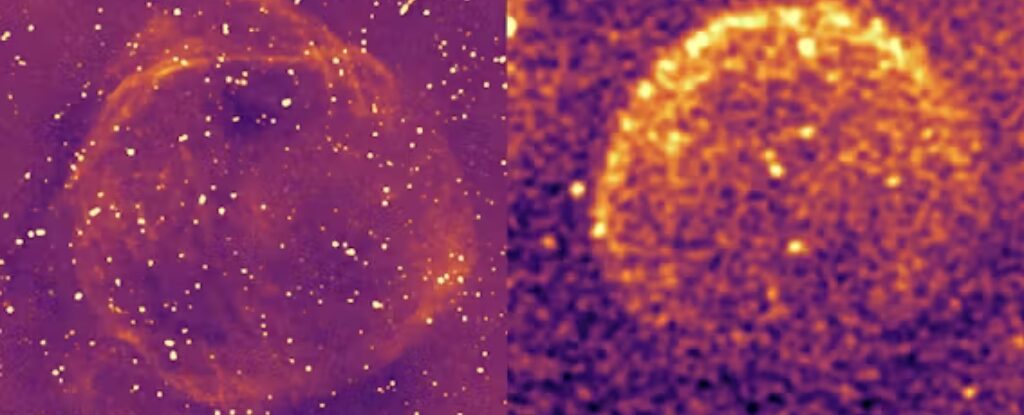Radio astronomers are making exciting discoveries using advanced telescopes like the Australian Square Kilometer Array Pathfinder (Askap) and South Africa’s Meerkat. These instruments detect radio signals, revealing a “universe of low surface brightness” previously unseen. The Evolutionary Map of the Universe (EMU) project maps the southern sky with unmatched sensitivity, producing the most detailed atlas of the southern hemisphere, which will benefit astronomers for years to come.
Recent findings include unique celestial objects, such as unstable Wolf-Rayet stars that form ghostly circular structures as they expel material. Supernova remnants, including mystery objects like Terreios, which maintains a near-perfect circular shape, provide insights into explosive stellar events.
Additionally, the Diprotodon supernova remnant has been characterized as one of the largest objects observed, unveiling its expansive structure and history. The new data also reclassifies known entities like the nebula VDB-80, revealing additional ionized hydrogen clouds in its vicinity.
Beyond our galaxy, Askap and Meerkat are uncovering foreign objects, such as a “Radio Ring” galaxy with a missing core, suggesting a chaotic past involving multiple supernovae. Finally, the LMC-ORC is a mysterious novel type of radio circle that further extends our understanding of the cosmos.
With only 25% of EMU surveys complete, the potential for uncovering more unique astrophysical phenomena remains significant, heralding the future contributions of the upcoming Square Kilometer Array project in deepening our comprehension of the universe.
Source link


